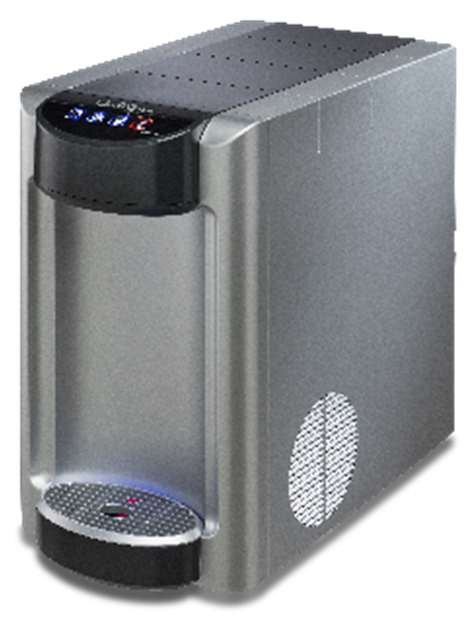Drinking Water
SELFIZZ PLUS OSMOSIS
SELFIZZ PLUS OSMOSIS WATER DISPENSER

Selfizz Osmosis is a good alternative to bottled water for normal domestic use, designed to produce refined AMBIENT/COLD/SPARKLING water. Compact, powerful and entirely made of stainless steel, SELFIZZ is the smallest cooler of Culligan’s range: perfect for your home. Available counter-top and under-sink. The following optional accessories can be installed: - 3-lever faucet - 5-way mechanical mixer Selfizz Osmosis is complete with an osmotic membrane that reduces the TDS and unwanted elements. The installation of a pretreatment with Culligan Carbon Block filter upstream of the system is recommended. The filtering system is designed to solve common problems of water quality, ensuring the elimination of any trace of impurity and turbidity, as well as unpleasant odors and tastes mainly due to the presence of chlorine. These filters are designed to solve common problems of water quality, by eliminating all traces of impurity, as well as unpleasant odors and tastes caused by the presence of chlorine. NOTE: The filtration system with filter Culligan Carbon Block is housed externally, interposing it between the liter-counter and the dispensing system. CULLIGAN CARBON BLOCK EVO FILTERS These filters have been designed to resolve common water-quality problems by eliminating traces of impurities, as well as unpleasant odours and flavours caused by the presence of chlorine. The filtering system is constituted by: Upper section complete with fixing bracket and instant inlet/outlet fitting. Filter cartridge containing active carbon The Pre-filtration kit with Carbon Block EVO complies with Italian Ministerial Decree 174 of 6 April 2004 and the Pressure Equipment Directive (97/23/CE). Carbon Block EVO Culligan Nominal flow rate: 5 l/min Max recommended capacity: 21000 litres (depending on the properties of the water entering the unit) IMPORTANT: The installation of a water softener with water that has a hardness greater than 17 ° f is recommended. Feeding the system with water that has a hardness greater than 17 ° f would greatly compromise the osmotic membrane.


